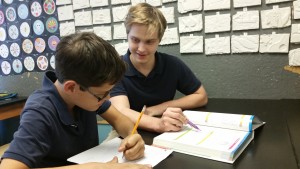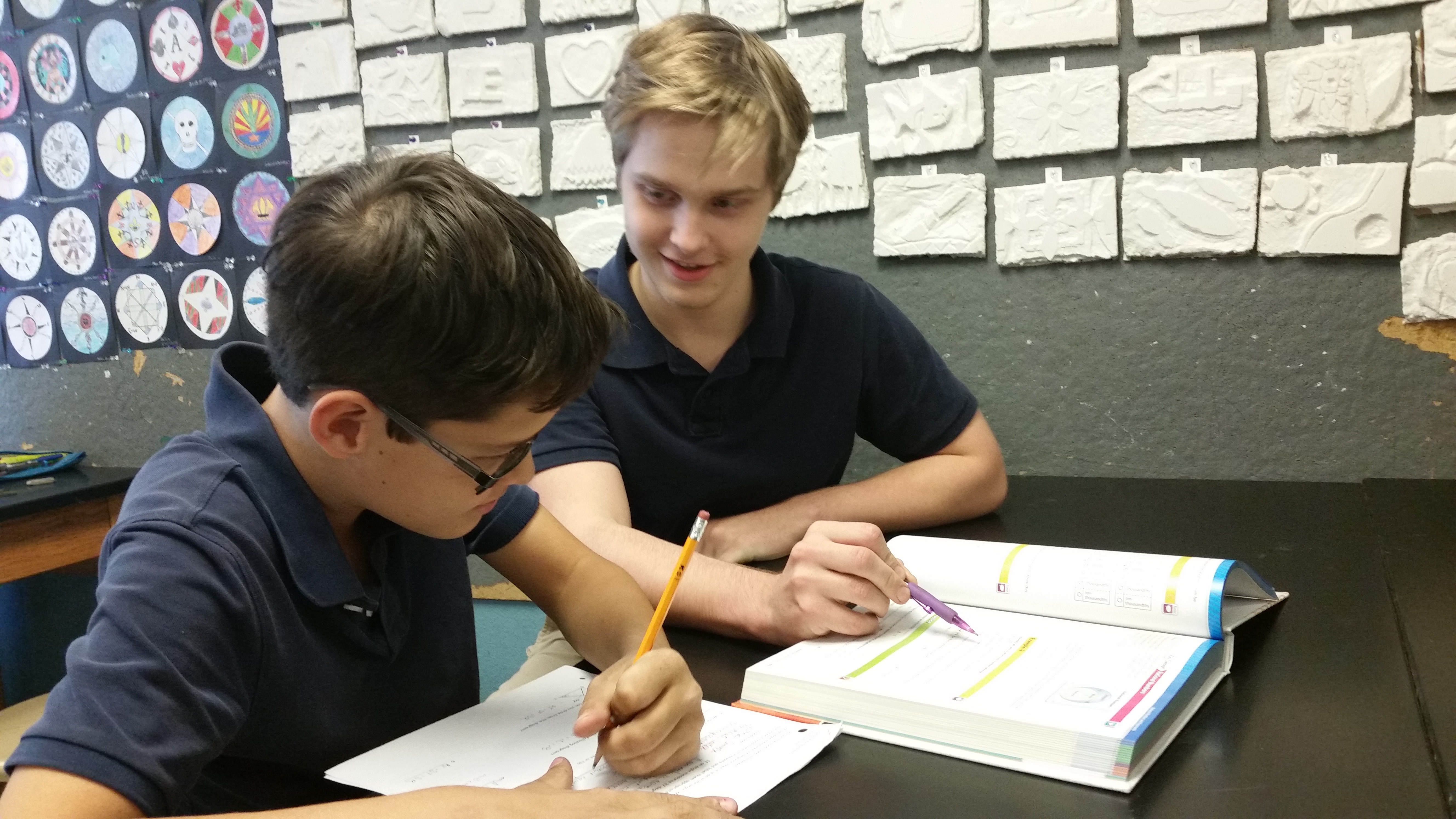By Elizabeth Hollman
“Something that warms my heart are kids who want to learn and are willing to put in that extra effort. It makes me so proud of them when I see them working so hard to catch up. Someone who wants to learn and who is willing to put in the time to sit down and have someone else help them is really admirable.”
 What Ms. Melton, an art teacher here at TPA, is talking about is our school’s peer tutoring program. Four days a week, before or after school, in the art room or at the picnic tables, you can see students helping other students achieve their best grade.
What Ms. Melton, an art teacher here at TPA, is talking about is our school’s peer tutoring program. Four days a week, before or after school, in the art room or at the picnic tables, you can see students helping other students achieve their best grade.
The peer tutoring program started about ten years ago, and is now run by Ms. Melton. Students can enlist the help of older kids to help them with their homework, a difficult concept, or simply to help them stay organized.
“To get tutored a student should be struggling, but that doesn’t mean they need to be failing. I have had students come in for tutoring who just had B’s, but they wanted to get A’s. They sometimes just needed a couple months of tutoring, and it got them up to where they wanted to be,” continues Ms. Melton.
If you want to be tutored, stop by the art room after school and talk to Ms. Melton, or contact Ms. Melton at gmelton@tempeprep.org.
She points out that “a student needs to make a commitment to coming on the day that I sign them up for. I need the tutoree to make that commitment, that they’re coming to learn.”
But if a student really invests their time and energy into tutoring, they can reap the benefits. “I’ve asked around, ‘Has tutoring helped you?’ and every kid told me, ‘Yes, peer tutoring really helped me!’ Just getting a peer tutor for a couple of months, and all of a sudden you feel like you get it and all of a sudden you feel good about yourself again,” remarks Ms. Melton.
But what about the other side of tutoring? How does it feel to be a peer tutor?
Senior Emma Moriarty says, “It’s great to give students the opportunity to get help one-on-one. Teachers can be busy during Paideia or after school, so it’s nice to have a supplemental program for those situations. It also is important for some students to be taught by peers because it is easier to relate to one another and may make the whole experience less intimidating.”
You can volunteer to become a peer tutor via Ms. Melton as well. Keep in mind that generally you need to be an A student to be a tutor. Peer tutors also need to make a commitment to who they’re tutoring. Tell Ms. Melton what subjects you’re comfortable tutoring, and when and where you can meet. Yet to be a peer tutor, you also need to be able to “walk in someone else’s shoes.”
“You can’t just be a good student,” says Ms. Melton. “You have to have a special kind of empathy for the student. To be able to put yourself in what it must be like to not understand something, even though you do understand it. It’s actually a skill.”
Also, good news for high schoolers! Peer tutoring counts as community service. But of course, that’s not the only reason to start helping out.
Sama Allam remarks, “Every day I’d walk by the art room last year and see people in there helping others, so I asked Ms. Melton if I could tutor. It seemed really cool to me and I thought I could help someone with their homework. It’s been pretty fun.”
As midterms near, the demand for peer tutoring increases. Ms. Melton shares, “At the beginning of the year the peer tutors are all asking me, do you have any requests? Progress reports and quarter grades quite often send people looking for help. Don’t wait, though!” That’s great advice – the right time to tutor or be tutored is right now.
